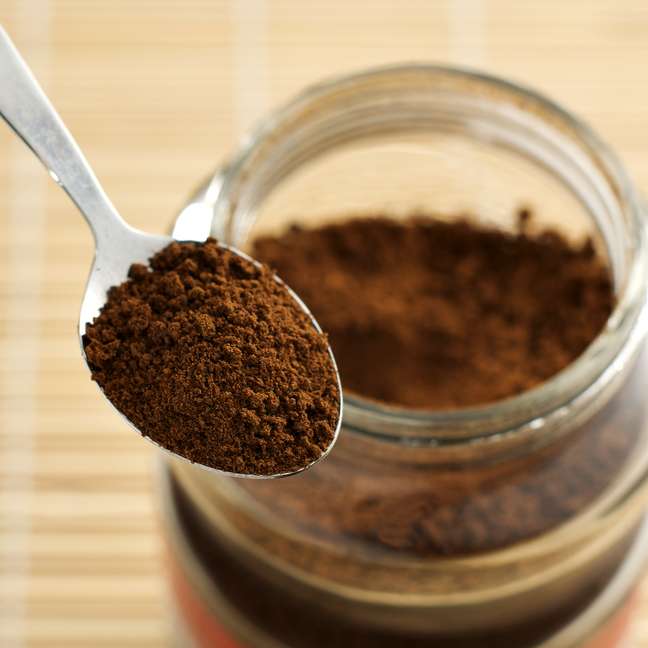A new vintage of instant coffee shows that the market is committed to offering better quality products. Check review
If only heard of instant coffee you have already rolled your eyes, with total contempt, this test performed by taste it will serve as an invitation to put aside prejudices and to open up to new experiences. It is true that the bad reputation of instant coffee, as it is also called, is not free: in Brazil, as well as in Europe and the United States, it is seen as a regular (if not worse) quality product because of the products offered are prepared mainly from grains of the species camphor coffee and its varieties conilon and robusta, with higher yields in the industrial process.
The good news is that there is a movement to offer around here excellent quality instant coffee by the main roasters, following a global trend. Highlight for the popular Intelligentsia, of Chicago; Ritual, from San Francisco; and Blue Bottle, of Oakland, who have started offering their own versions of instant coffee. In Europe the highlight goes to the Italian illy, with a blend of Arabica, and to the German The Barn, which preserves an excellent instant coffee prepared with natural Ethiopian Dambi Uddo beans.
Interestingly, Brazil has been producing instant coffee with Arabica coffee beans since the 1980s, with Cia. Soluble coffee iguacu. However, the production was exclusively intended for export to the Japanese market.

the tasting
Since it is already possible to find a portion of these new instant coffees on the market, we have promoted a blind tasting to evaluate 11 of these products.
Besides me, Ensei Neto, an expert on the subject and author of the blog Um Café para Dividing, the tasting, held at the Sindicafé São Paulo Coffee Preparation Center, had a strong jury, which relates to the drink in different ways. : Camila Archanjo (from Sindicafé), Maurício Maia (from the blog O Cachacier) and chef Carla Pernambuco. Each judge was placed in a sensory evaluation booth to taste the coffee samples prepared in a ratio of 1:39 (10 g of instant coffee to 400 ml of water), the equivalent of a teaspoon in a 240 cup. ml. The water used was standardized in a Pentair system and heated to 96 ° C for service.
Overall, the tasting surprised the judges with the high quality, “unexpected for this type of coffee,” they said. Good acidity, fruity notes and low bitterness were the salient points found during the tasting. “Very different from what was known until now,” says Maia. The result, for me, shows that specialty coffee, now instant, has broken the last barrier. Check out the reviews below.
What is instant coffee and how is it made?
Instant coffee can be produced using two main processes: atomization, or spray dryer, and freeze drying. Basically, it tries to remove all the water from a coffee solution by converting the substances that have been dissolved into something solid.
The spray dryer system consists of initially producing an extracted coffee in high concentration and then being subjected, by spraying in micro-drops, to a flow of hot air. The result is a fine powder, which can undergo another process to form a so-called agglomerate, which dissolves easily even in cold water.
Freeze-dried soluble coffee, usually presented in saucers, is obtained through a first process of freezing the coffee extract and then sublimating the water (transfer from solid to steam, under vacuum). The sensory result is very rich, as there is practically no loss of the most volatile and, therefore, more delicate substances.
feel the story comes here
Instant coffee was born in Great Britain in 1771, while the first American product was launched in 1851. Its main attraction was the ease of transport and preparation, having been initially used by soldiers during the Civil War.
The Japanese-American Satori Kato was the inventor of the first industrial method to create soluble coffee powder with good stability, in 1901. In 1937 the chemist Max Morgenthaler, of Nestlé, perfected the process of preparing instant coffee, obtaining a powder of easy dissolution in water, with a result similar to that of fresh coffee. The first soluble coffee industry in Brazil was founded in 1953, an activity in which, today, our country is a world leader in production and export.
The best instant coffees on the market
Nescafè Gold 8
Nestlé, freeze-dried (R $ 21.99 at Pão de Açúcar)
Drink with excellent structure, highlighting the acidity and body of the liqueur with a silky touch. “The molasses and caramel set the tone. It also impresses with its good body”, describes chef Carla Pernambuco.
Sensory profile: liqueur acidity, chocolate, caramel, chestnuts, full-bodied, structured.
2nd Nescafé Origins of Brazil – Chapada Diamantina
Nestlé, powder dryer (R $ 14.20 at Sonda Supermercados)
Made with 100% Arabica beans with beans from the Bahia Chapada Diamantina, it stood out for its intense caramel and the balance of the drink. “It has fruity notes and an elegant finish,” says Ensei Neto.
Sensory profile: medium-low citrus acidity, chestnuts, caramel, light floral, fruity, medium-bodied, elegant.
3rd traditional Cafuso
Real Café, granulated spray dryer (R $ 3.60; 50 g – brand Espírito Santo, not yet sold in SP)
“Creamy”, Maurício Maia called it. 100% conilon product, it stands out for its balance and body. It has a good final acidity, as well as a delicate fruity note.
Sensory profile: medium citrus acidity, fruity, chocolaty, full-bodied, moderate astringency, soft.
Extra strong Cafuso
royal coffee; granular spray dryer; BRL 3.60; 50 g (brand of Espírito Santo, not yet sold in SP)
It is 100% conilon. It surprised the judges with its balanced profile and the fact that it was easy to drink.
Sensory profile: medium citrus acidity, full-bodied, soft, with hints of chocolate.
illy
illycaffè; freeze-dried (R $ 45.36 in Carrefour)
100% Arabica, contains 3% ground coffee. Its blend is made up of grains from different countries, including Brazil.
Sensory profile: delicate citrus acidity, herbaceous notes, light caramel, moderate roughness.
Classic Ladies
JDE; freeze-dried (R $ 17.20 in St. Marché)
Blend of Arabica and Canephora. The drink is “flat”; it could be bolder.
Sensory profile: low acidity, light citrus and chocolate, light astringency.
Nescafè Gold 6 Espresso
Nestlé, freeze-dried; BRL 19.20 in S. Marché
Surprising citrus acidity, very well crafted with caramel notes and the creamy touch of body perception. “The acidity is brilliant, vibrant, incredible,” Camila Archanjo assessed.
Sensory profile: bright acidity, caramel, citrus, full-bodied, creamy, balanced.
Nescafè Gold 9
Nestlé; freeze-dried (R $ 18 to Pão de Açúcar)
Prepared with 100% Arabica beans, its intense roasting favors its bitter taste. It goes well with milk.
Sensory profile: low acidity, intense bitterness, light smoke, light astringency.
Nescafé Origins of Brazil – São Sebastião do Paraíso
Nestlé; powder dryer (R $ 14.50 in Pão de Açúcar)
100% Arabica beans from the south-east of Minas Gerais, on the border with Alta Mogiana (an area recognized for the production of excellent coffees).
Sensory profile: medium citrus acidity, chocolate, light fruity, peanut, light body.
Nescafé Origins of Brazil – Alto Paranaíba Mountains
Nestlé; powder dryer (R $ 14.20 at Sonda Supermercados)
Balanced drink. 100% Arabica with beans produced in the Cerrado Mineiro.
Sensory profile: medium citrus acidity, light caramel, toasted notes, soft finish.
three hearts
Three hearts; freeze-dried (R $ 18.35 in St. Marché)
100% Arabica. The chemical flavor predominated, affecting the perception of the body.
Sensory profile: medium citrus acidity, intense bitterness, chemical flavor, light body.
Source: Terra
Benjamin Smith is a fashion journalist and author at Gossipify, known for his coverage of the latest fashion trends and industry insights. He writes about clothing, shoes, accessories, and runway shows, providing in-depth analysis and unique perspectives. He’s respected for his ability to spot emerging designers and trends, and for providing practical fashion advice to readers.








